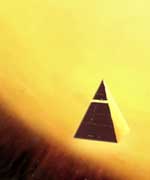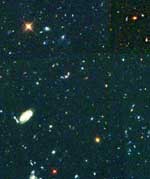نظریه سی پی اچ بر اساس تعمیم سرعت نور از انرژی به ماده بنا شده است.
سی پی اچ در ژورنالها
|
ثابت جهانی آلفا با زمان تغییر می کند
|
||||||||||||||||||||||||||||
|
عدد آلفا که گاهی اپسيلون بيانگر آن است كه هسته هاي اتمي با چه شدتي به يكديگر متصل شده اند و چگونه تمامي اتم هاي موجود در زمين شكل گرفته اند. مقدار اپسيلون انرژي ساطع شده از خورشيد را كنترل مي كند و از آن حساس تر اينكه، چگونه ستارگان، هيدروژن را به تمامي اتم هاي جدول تناوبي تبديل مي كنند، به دليل فرآيندهايي كه در ستارگان روي مي دهد، كربن و اكسيژن عناصر مهمي محسوب مي شوند ولي طلا و اورانيوم كمياب هستند. اگر مقدار اپسيلون 006/ يا 008/ بود ما وجود نداشتيم. عدد كيهاني e توليد عناصري را كه باعث ايجاد حيات مي شوند ـ كربن، اكسيژن، آهن و... يا ساير انواع كه باعث ايجاد جهاني عقيم مي شود را كنترل مي كند. برای مطالعه بیشتر به مقاله شش عدد حاکم بر جهان مراجعه کنید.
1 2 3 4 5 6 7 8 9 10 11 12 13 14 15 16 17 18 19 20 21 22 23 24 25 |
|
Sub quantum space and interactions from photon to fermions and bosons |
|
نامه سرگشاده به حضرت آیت الله هاشمی رفسنجانی |
آرشیو موضوعی

از آغاز کودکی به پدیده های فیزیکی و قوانین حاکم بر جهان هستی کنجکاو بودم. از همان زمان دو کمیت زمان و انرژی بیش از همه برایم مبهم بود. می خواستم بدانم ماهیت زمان چیست و ماهیت انرژی چیست؟





